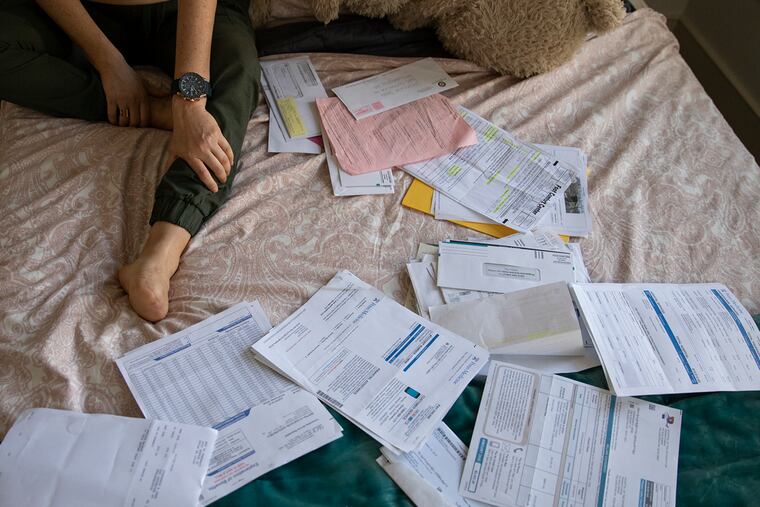The same medical procedure costs $700 at one place and $2,000 at another. This has to change.
In our twisted, tangled reimbursement system, patients are being charged more for the same health-care services just because of where they receive them. You read that right. And the money adds up.

As doctors, we get a front-row seat to witnessing how high health-care costs, which have been rising across the board for decades, harm our patients. Many Americans know too well how they’ve been impacted by skyrocketing prescription drug costs or rising insurance premiums and deductibles. But another less obvious aspect of health care is also costing patients millions of dollars, both here in the Philadelphia area and across the country. And Congress must act on it.
Our disjointed health-care system consists of seemingly countless players — from patients, of course, to health-care providers (working for hospital systems or independent offices or clinics) to payers. The last group — payers — includes private insurers and Medicare, who reimburse health-care providers for services rendered.
Right now, in our twisted, tangled reimbursement system, patients are being charged more for the same health-care services just because of where they receive them. You read that right: The same patient, getting the same service, is charged more depending on where they receive it.
For example, a colonoscopy could be $625 at the local doctor’s office, but $1,383 at the outpatient setting.
» READ MORE: You deserve to know what you pay for hospital care | Opinion
This means patients across the state and country are losing billions of dollars just because of where they receive care. This is true for patients who have private insurance as well as those with Medicare, whose copays increase when services cost more. It’s especially true for patients without insurance, who pay for these services out of pocket.
Crunching the numbers illustrates just how these billions of dollars add up so quickly.
Look at Medicare — which, again, due to our complex reimbursement systems, is charged more for services at hospital outpatient departments than physicians’ offices. Patients and Medicare both pay more for the same services at certain locations. Chemotherapy at an independent physician’s practice could cost a patient and Medicare $136, but that same chemotherapy would be $281 at a hospital outpatient setting. Cardiac imaging could be $655 at the first location, but a whopping $2,078 at the other.
Overall, Medicare pays between 106% and 217% more for the same service when that service is delivered at an outpatient department rather than a physician’s office.
These costs don’t just get passed onto individual patients — taxpayers pay more to cover higher Medicare costs, and privately insured patients pay more via higher premiums.
These costs don’t just get passed onto individual patients.
The more unaffordable health care becomes, the less accessible it is to patients. Health-care debt has risen sharply, now affecting more than 100 million Americans. A 2022 survey shows that about 40% of American adults say they or a family member has delayed or gone without medical care simply due to cost within the previous 12 months.
As emergency care physicians, we’re sadly familiar with what happens when people delay needed preventive care and treatments. They often end up in our emergency rooms. Manageable health conditions worsen, becoming more painful, and more difficult and expensive to treat. If a woman with an early cancer diagnosis can’t afford to receive chemotherapy at the only location in her area, an outpatient clinic, she may stop going. Meanwhile, the cancer may grow and spread, causing enough pain to send her to the hospital. If a patient with a heart condition goes for routine cardiac imaging but gets a higher bill because his care was moved from one location to another, he may feel he can’t afford to get the next imaging done. He may end up in our emergency room, having had a preventable heart attack.
It shouldn’t be this way.
Our leaders in Congress have taken meaningful action over the years to help reduce health-care costs and increase access, from passing the Affordable Care Act, insuring millions more Americans, to the recent Inflation Reduction Act, which now caps insulin prices for Medicare beneficiaries and allows Medicare to negotiate prescription drug prices. Now Congress must act on site-neutral payments, to ensure that patients pay the same prices for the same services. We urge our leaders to act on this bipartisan issue to help save patients money and improve health outcomes.
Max Cooper and Meaghan Reid are emergency physicians in Southeastern Pennsylvania and together lead the Pennsylvania chapter of the Committee to Protect Health Care.